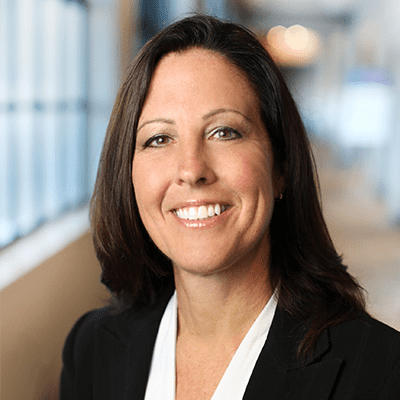- Solutions
- Solutions
- Home Health
- Hospice
- Life Plan Community
- Palliative Care
- Private Duty
- Senior Living
- Skilled Nursing
- Skilled Nursing
- Skilled Nursing Software
- Advanced Insights
- Customer relationship management
- Data and analytics
- Financial & operations management
- Marketing
- Nutrition management
- Referral management
- Regulatory compliance
- Retail management
- Resident engagement
- Revenue cycle management
- Skilled nursing interoperability
- Partners
- Blogs
- Resources
- About
- User Conference

Requirements of Participation (RoP): What You Need to Know…and Do.
The first thing you need to do is circle October 24 on your calendar. That’s the day updated survey standards go into effect that may very well affect your facility. We know many of you have questions about the RoP, what you need to know and what you need to do.
Q: What are Requirements of Participation?
A: Requirements of Participation, also known as RoPs, are stringent health and safety standards, originally implemented in 2016. Facilities and providers must maintain full compliance with these requirements, via surveys, to continue participation in Medicare and Medicaid. It’s also important to note substantial penalties may be levied for non-compliance.
Q: What has been happening lately with RoP?
A: On June 29, 2022, CMS released long-awaited interpretive guidance for Phase 3. Implemented in 2019, Phase 3 introduced the requirement for an onsite Infection Preventionist (IP). However, the absence of guidance from CMS has limited the ability of survey agencies to assess compliance. The updated survey standards effective October 24th include verification that facilities have a qualified, part-time Infection Preventionist in place.
Q: How does the RoP update impact the role of Infection Preventionist?
A: The June updates provide several details for Surveyors to identify areas of non-compliance for the IP role. The related F Tag to the Infection Preventionist role is F-Tag 882. Compliance against these updated regulatory requirements for Infection Prevention and Control and the role of the Infection Preventionist will be under intense scrutiny by State Agencies and Surveyors, as well as CMS and other regulatory bodies.
Q: How do I know if my Infection Preventionist is compliant?
A: An IP will be evaluated against specific criteria outline in the SOM. Facilities are required to have an Infection Preventionist present at least part-time. However, facilities are responsible for ensuring that the role is tailored to meet the needs of the facility and its residents. While 30 hours or less is generally considered part-time, facilities must consider Census, resident characteristics and patient acuity in determining the number of hours the IP must be on-site
Q: What other requirements must the IP have?
A: The Infection Preventionist is required to have relevant professional training in nursing, medical technology, microbiology, epidemiology or in another related discipline such as a physician, pharmacist or physician assistant. They must be able to provide proper documentation for their qualifications such as a degree, certificate or diploma
The Infection Preventionist must also have specialized Training in Infection Prevention and Control which may include:
- Care for residents with invasive medical devices
- Resident care equipment (such as ventilators)
- Treatment such as dialysis, as well as high acuity conditions.
Training must be completed prior to assuming the role of IP and the facility must be able to provide evidence of completion.
Q: So, what do I need to do to prepare?
A: Basically, you need to stay on top of three things:
- Review the updated guidance closely and the CMS Critical Element Pathway with respect to the section on the IP.
- Review the Infection Prevention and Control Policy and Procedure with the Medical Director and Pharmacy Consultant in conjunction with the Quarterly Quality Assurance Committee meeting.
- Conduct updated training for your Infection Preventionist and make sure nursing leaders are supervising and monitoring for compliance with the Infection Prevention and Control Policy and Procedure.
Q: Can Technology Help?
A: Absolutely. All the requirements will be easier to navigate with the help of technology, which can assist the Infection Preventionist and help facilities in efforts to remain compliant with these updated RoPs.
Partnering with companies like MatrixCare can help improve your business in several key areas:
- Actionable dashboards help limit red tape so you can spend more time with patients.
- In-product alerts for vitals, labs and other documentation can help you in efforts to reduce falls and infections.
Clinical Advanced Insights help new caregivers identify increased risks of infections/falls.
MatrixCare continually innovates so our customers can do good and do well. Ask us how we can partner with you during this challenging environment of RoP, regulatory changes and more.
Resources:
Request a demo today for a closer look at MatrixCare.
See what MatrixCare can do for you
Jenny Lee
Jenny Lee is a health care regulatory expert with more than 15 years of experience. After working for the Brookings Institution and various specialty medical organizations, including ASCRS and the National PACE Association, she joined MatrixCare as its Regulatory Compliance Manager, to ensure that all its technology solutions remain compliant in the ever-changing health care market. She is excited by MatrixCare’s continuous opportunities for innovation to support patients and providers in the long-term care space.
Related Posts


See MatrixCare in action
Start by having a call with one of our experts to see our platform in action.
MatrixCare offers industry-leading software solutions. Thousands of facility-based and home-based care organizations trust us to help them improve efficiency and provide exceptional care.
© 2025 MatrixCare is a registered trademark of MatrixCare. All rights reserved.






